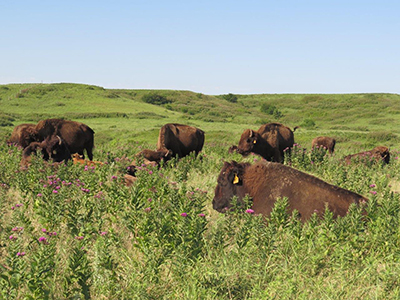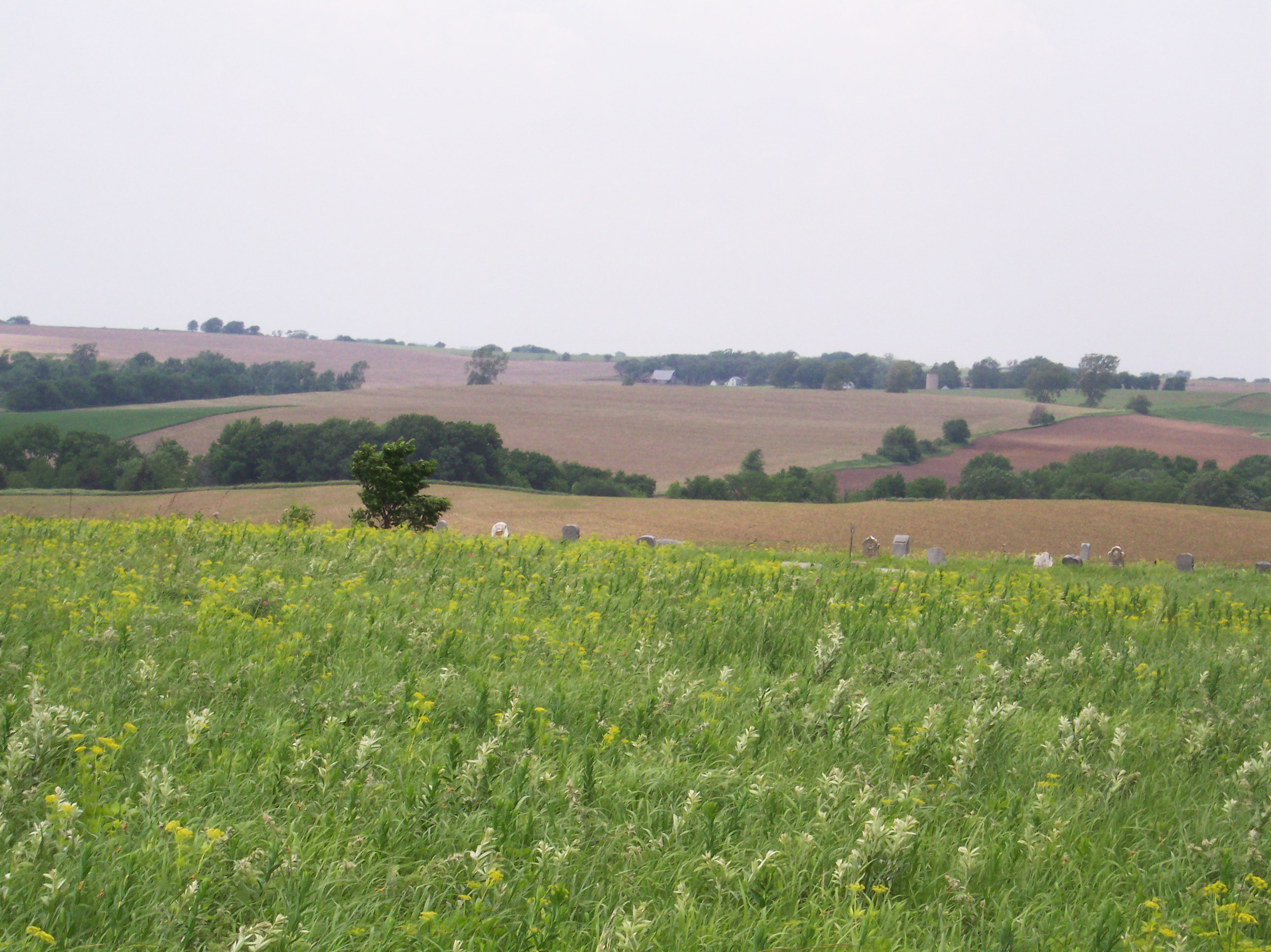October 31, 2013
CU-Boulder-led team takes first look at diverse life below rare tallgrass prairies

Konza Prairie in Kansas. Photo courtesy of Suzanne Prober.
America’s once-abundant tallgrass prairies—which have all but disappeared—were home to dozens of species of grasses that could grow to the height of a man, hundreds of species of flowers, and herds of roaming bison.
For the first time, a research team led by the University of Colorado Boulder has gotten a peek at another vitally important but rarely considered community that also once called the tallgrass prairie home: the diverse assortment of microbes that thrived in the dark, rich soils beneath the grass.
“These soils played a huge role in American history because they were so fertile and so incredibly productive,” said Noah Fierer, a fellow at the Cooperative Institute for Research in Environmental Sciences (CIRES) and lead author of the study published today in the journal Science. “They don’t exist anymore except in really small parcels. This is our first glimpse into what might have existed across the whole range.”
CIRES is a joint institute of CU-Boulder and NOAA.
The remarkable fertility of soils beneath the tallgrass prairie—which once covered more than 150 million U.S. acres, from Minnesota south to Texas and from Illinois west to Nebraska—were also the prairie’s undoing. Attracted by the richness of the dirt, settlers began to plow up the prairie more than a century and a half ago, replacing the native plants with corn, wheat, soybeans and other crops. Today, only remnants of the tallgrass prairie remain, covering just a few percent of the ecosystem’s original range.
For the study, Fierer, an associate professor of microbial ecology, and his colleagues used samples of soil collected from 31 different sites spread out across the prairie’s historical range. The samples—which were collected by study co-author Rebecca McCulley, a grassland ecologist at the University of Kentucky—came largely from nature preserves and old cemeteries.
“It was very hard to find sites that we knew had never been tilled,” Fierer said. “As soon as you till a soil, it’s totally different. Most gardeners are familiar with that.”
The researchers used DNA sequencing to characterize the microbial community living in each soil sample. The results showed that a poorly understood phylum of bacteria, Verrucomicrobia, dominated the microbial communities in the soil.
“We have these soils that are dominated by this one group that we really don’t know anything about,” Fierer said. “Why is it so abundant in these soils? We don’t know.”
While Verrucomicrobia were dominant across the soil samples, the microbial makeup of each particular soil sample was unique. To get an idea of how soil microbial diversity might have varied across the tallgrass prairie when it was still an intact ecosystem, the researchers built a model based on climate information and the data from the samples.
“I am thrilled that we were able to accurately reconstruct the microbial component of prairie soils using statistical modeling and data from the few remaining snippets of this vanishing ecosystem,” said Katherine Pollard, an investigator at the Gladstone Institutes in San Francisco and a co-author of the paper.
Fierer and his colleagues are already hard at work trying to grow Verrucomicrobia in the lab to better understand what it does and the conditions it favors. But even without a full understanding of the microbes, the research could bolster tallgrass prairie restoration efforts in the future.
“Here’s a group that’s really critical in the functioning of these soils. So if you’re trying to have effective prairie restoration, it may be useful to try and restore the below-ground diversity as well,” Fierer said.
CU-Boulder co-authors on the paper include Jonathan Leff, also of CIRES and the Department of Ecology and Evolutionary Biology; and Rob Knight, a Howard Hughes Medical Institute Early Career Scientist in the Department of Chemistry and Biochemistry.
Other co-authors are Joshua Ladau of the Gladstone Institutes; Jose Clemente, of the Mount Sinai School of Medicine in New York; and Sarah Owens and Jack Gilbert, both of Argonne National Laboratory in Illinois.
The research was funded by the National Science Foundation, the Howard Hughes Medical Institute, the Gordon & Betty Moore Foundation, the U.S. Department of Energy and the USDA National Research Initiative.

A tallgrass prairie in Missouri found at the New Garden Cemetery. Photo courtesy of Rebecca McCulley.
CIRES is a joint institute of the National Oceanic and Atmospheric Administration (NOAA) and the University of Colorado Boulder.
Contacts:
- Noah Fierer, University of Colorado Boulder, 303-492-5615, Noah.Fierer@colorado.edu
- Rebecca McCulley, University of Kentucky, 859-257-6388, Rebecca.McCulley@uky.edu
- Katherine Pollard, Gladstone Institutes, 415-734-2711, kpollard@gladstone.ucsf.edu
- Laura Snider, CU media relations, 303-735-0528, Laura.Snider@colorado.edu
Graphics:
Download the photos: [ 01 ] [ 02 ]

